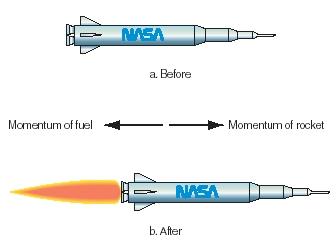More SpaceX and a Rocket Lesson

SpaceX successfully launched the Falcon 9 and Dragon on Tuesday morning, and today's rigorous testing ( that I wrote about last time ) went without a hitch. The Dragon is going to attach to the ISS tomorrow!
So in honor of that, I want to give an elementary lesson on rockets, focusing on points most salient to Tuesday's launch.
You know the saying, "It's not rocket science.." as if rocket science is some incomprehensibly complex field? Well, it is complex, but we - humanity - have figured out a lot of it.
So, rockets. I'll explain how rockets work, why they launched from Florida, and why the launch window was just one second long.
How rockets work
Imagine you're on an ice rink with a friend who's about the same size as you and you're both wearing ice skates. If you walk up to each other, stand totally still and then push your friend, then what happens?
You both go in opposite directions..! Try it :)
So what if you put on a bunch of armor and heavy stuff and then get into an ice cleaning machine. Then your friend walks up to you and pushes the heavy machine, what happens?
The really heavy machine moves really slowly, and then friend moves about the same speed as before.
This is called conservation of momentum, and it's the basic idea behind how rockets work. But for rockets, the really light 'person' is rocket fuel that gets spit out of nozzles really quickly due to combustion, and the really heavy thing is the rocket. So the gigantic rocket is actually being propelled by a bunch of little tiny gas molecules that are moving really really fast.

Why they launch from Florida
Most of a launch assembly is fuel. In this picture of a typical space shuttle launch, that entire red tank is all fuel.

The fuel's job is to get the rocket going really fast against the pull of gravity. If you add a little bit of weight to the rocket, you need to add fuel to get that weight up to space. But you've just added fuel! You need to add more fuel to get that fuel up to space. This is the basic idea behind the ideal rocket equation .
So NASA thinks of every way possible to reduce the amount of fuel they need. One of those ways is to remember that the Earth is spinning, so the closer you are to the equator, the faster you're spinning, the less speed you have to add to the rocket, and the less fuel you need. Florida also has nice weather, so there's less of a chance of calling off a launch for bad conditions.
Why there was a 1-second launch window
The Falcon 9 rocket has a fixed size. That means it has a fixed amount of fuel, which means there's a fixed amount of momentum they can add to the rocket. They have to spend some of it getting to the ISS. They have to save some of it for testing performance, and they have to save some of it in case something goes slightly wrong.
Remembering that the Earth is spinning (at roughly 1000 mph) and that the ISS is
(at about 250 miles above the surface, at 17000 mph), there's a second when they cross paths. There is a moment when it's best to launch, when the distance from the launchpad to the ISS is the shortest it'll ever be. They can save some momentum to allow them to launch before or after that ideal moment, or they can hope for the best and launch a lighter rocket in a one second window, and that's what they did. My guess is it probably came down to a decision of widening the launch window or allowing for more testing. I'd pick the stress testing too.
In the future, they may not need to do so much testing and allow a wider launch window, perhaps closer to the 5 minutes on either side usually allotted for NASA Space Shuttle launches.